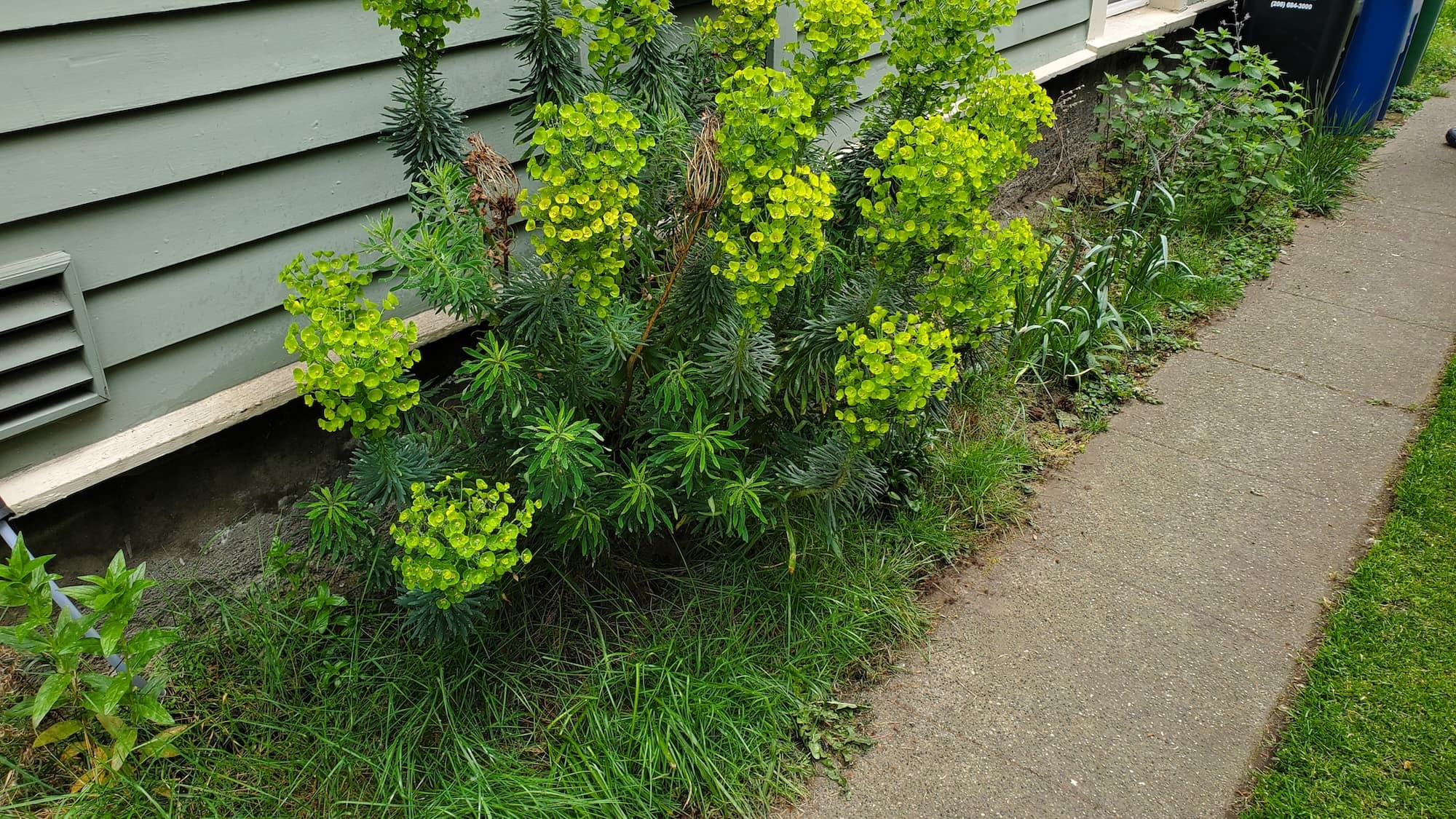White Center Weeding flagstone walkways
Homeowner’s Issue
White Center yards face a mix of challenges that make flagstone walkways particularly prone to weed problems. Our area’s frequent cool, wet winters and shady microclimates from tall cedars and maples encourage moss, ivy, chickweed, and annual grasses to take hold in joints. Many homes have compacted silty loam and clay pockets that hold moisture, while organic debris blown into flagstone joints creates a seedbed for plants. Poor drainage on slight slopes near properties around Roxhill Park or towards West Seattle can push soil into gaps, and inconsistent sun exposure—sunny front yards versus shady sides—means some sections need different care.
Homeowners also worry about curb appeal and HOA rules that favor tidy, low-maintenance surfaces. Left unchecked, weeds lift stones, create trip hazards, and make driveways and paths look neglected. Sustainable, regular weeding combined with proper joint repair and drainage fixes reduces recurring work, protects flagstone, and keeps properties in compliance with neighborhood standards. For many White Center homeowners, a hands-on, locally informed approach is the fastest, most durable solution.
Our Quality Service
We focus on sustainable, manual methods for weeding flagstone walkways—no synthetic herbicides. We remove roots and rhizomes by hand, use heat or hot-water spot treatment where appropriate, and extract accumulated organic material from joints. When joints need it, we reinstall jointing material like gravel or polymeric sand alternatives and improve drainage on slopes to limit future growth.
Local insight guides our work: we schedule heavier cleaning before the wet season, protect exposed slopes from washout, and recommend sun/shade-appropriate edge planting. Benefits include improved safety, better curb appeal, reduced maintenance, and longer-lasting flagstone.
What’s Included
- Onsite assessment and treatment plan
- Hand-pulling and root extraction of weeds between stones
- Joint cleaning and removal of organic debris
- Refill of joints with compacted, permeable material (if requested)
- Light surface sweeping or pressure rinse where safe for the stone
Options / Upgrades:
- Landscape fabric + mulch borders to reduce edge weeds
- Organic spot treatments and heat-based weed control
- Haul-away of green waste vs. placement in customer green bin
- Gravel edge or low-maintenance plantings to reduce future ingress
Before & After / Expectations
- Work can be dusty and produce green waste; expect small piles of debris for haul-off or green bin pickup.
- Typical visits are 1–4 hours depending on walkway length and severity; larger projects may need phased visits.
- We may need access to a nearby hose and a short hose connection for hot-water work.
- Aftercare: keep joints clear of leaves, sweep regularly, and replace joint material every few years in high-traffic areas.
- For shady spots, control moss with regular scraping and increased light where feasible; for slopes, monitor drainage after heavy rains.
FAQs
Q: How long before I see regrowth?
A: With hand removal and joint repair, most homes see minimal regrowth for months; heavy seed pressure areas may need follow-up in 6–12 weeks.
Q: Do you use herbicides?
A: No—our approach uses mechanical removal, heat, and organic options only for lasting, safe results around people and pets.
Q: Can you work around HOA rules and park-facing property lines?
A: Yes. We’ll follow visible guidelines and recommend low-maintenance solutions that meet common HOA expectations.
Q: How do you handle debris?
A: We offer haul-away or green-bin placement; choose the option that suits your property.
Call to Action
White Center homeowners: book a free estimate for professional, sustainable weeding of your flagstone walkways. We offer fast scheduling, dependable crews, and local experience across White Center, West Seattle, and Burien. Email us to set up a visit or send photos for a quick quote.
📧 neatandtidyseattle@gmail.com










